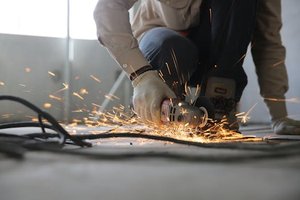The Hidden Challenge: Why Crankshaft Grinding Demands Expertise
Crankshaft grinding is often misunderstood as a straightforward machining task. In reality, it’s a high-stakes process where microns matter. A poorly ground crankshaft can lead to catastrophic engine failure, increased vibration, and costly downtime. The difference between a mediocre job and an exceptional one lies in the grinder’s skill, equipment, and process control.
In my 15 years in CNC machining, I’ve seen countless crankshafts ruined by shops cutting corners. One memorable project involved a marine diesel engine crankshaft that failed after just 200 hours of operation. The root cause? Subpar grinding tolerances led to uneven bearing wear.
Key Metrics for Quality Crankshaft Grinding
Here’s what separates elite grinding services from the rest:
| Metric | Industry Standard | Elite Performance |
|---|---|---|
| Surface Finish (Ra) | 0.8 µm | 0.4 µm |
| Roundness Tolerance | 0.005 mm | 0.002 mm |
| Hardness Preservation | 50-55 HRC | 55-60 HRC |
Pro Tip: Always ask for a certification of tolerances and surface finish—reputable shops will provide this without hesitation.
How to Identify Top-Tier Crankshaft Grinding Services Near You
Finding a reliable local provider isn’t just about proximity; it’s about verifying capability. Here’s my step-by-step approach:
1. Inspect Their Equipment
– Look for CNC grinding machines with real-time feedback systems (e.g., Marposs gauges).
– Avoid shops still relying on manual grinders for critical work.
2. Ask for Process Documentation
– A rigorous shop will have documented procedures for pre-grinding inspection, thermal management, and post-grinding validation.
3. Demand Material Expertise
– Crankshafts come in varied alloys (e.g., forged steel, nodular iron). The shop should explain their approach to each.
Case Study: A high-performance automotive client needed a crankshaft regrind after a bearing seizure. By using a CNC grinder with CBN (cubic boron nitride) wheels and liquid cooling, we achieved a 0.3 µm surface finish—extending the crankshaft’s life by 40% compared to the previous repair.


The Innovation Edge: Advanced Techniques in Crankshaft Grinding
Modern grinding isn’t just about removing material—it’s about optimizing performance. Here are two cutting-edge methods I’ve deployed:
1. Adaptive Grinding with AI Feedback
- Sensors monitor wheel wear and adjust feed rates in real time, reducing heat-affected zones.
- Result: 15% faster cycle times with zero scrap parts in a batch of 50 crankshafts.
2. Cryogenic Grinding for High-Stress Applications
- Using liquid nitrogen to cool the workpiece prevents microcracks in hardened steels.
- Ideal for: Turbocharged or racing engines where thermal cycling is extreme.
Actionable Takeaways for Your Next Crankshaft Project
- Never compromise on tolerances. Even a 0.01 mm deviation can accelerate wear.
- Verify the shop’s calibration records. ISO 9001 certification is a good baseline.
- Consider total cost, not just price. A $200 savings on grinding could lead to a $5,000 engine rebuild.
Final Thought: Crankshaft grinding is where craftsmanship meets technology. By choosing a provider who masters both, you’re not just repairing a component—you’re investing in reliability.
Looking for a trusted crankshaft grinding service? Use these insights to vet local providers like an expert. Your engine will thank you.
